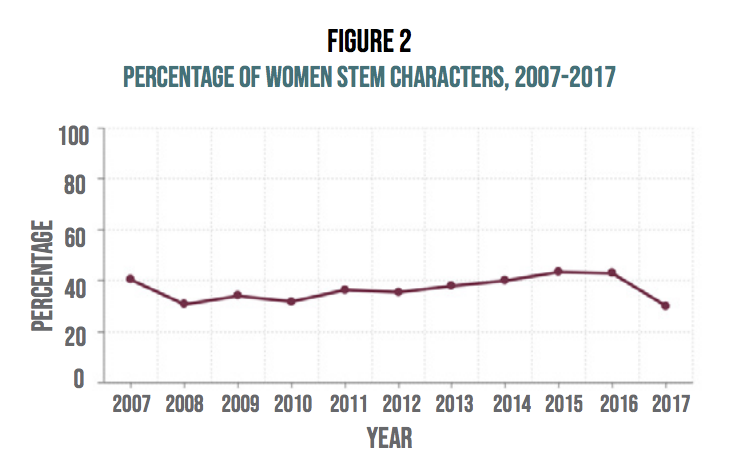Black Panther. Gravity. Annihilation. Hidden Figures. In the past few years, the big screen has been graced by some truly awe-inspiring female scientists and engineers.
But even though we now have Shuri to outsmart Bruce Banner and all seven of his PhD's, data shows that media portrayals of scientists are still reinforcing an outdated early 20th century stereotype of what a scientist is.
A new analysis from the Lyda Hill Foundation and the Geena Davis Institute on Gender in Media reveals just how little diversity there truly is on screen.
The study examined over 1,000 leading or major characters taken from the most popular movies and TV shows between 2007 and 2017.
No matter how much progress we think we have made, it appears that the media's narrow portrayal of scientists continues to reinforce the same classic stereotypes about them being brainy white men.
In fact, the findings reveal that the diversity of scientists on screen is the same as it was ten years ago - and in some ways, may have even gone backwards.
Of all the STEM professionals portrayed in film and television, male scientists once again outnumbered female scientists by nearly two-to-one.
In total, only 37.1 percent of STEM characters during this time were female, which is a three percent drop from the beginning of the decade.
 (The Lyda Hill Foundation and The Institute on Gender in Media)
(The Lyda Hill Foundation and The Institute on Gender in Media)
For women of colour, the difference is even more dramatic. The results reveal that a majority 71.2 percent of all scientist characters during this time span were white.
"Given the popularity of recent movies like Hidden Figures and Black Panther, it's good business to have diverse women portrayed in science," Nicole Small, president of the Lyda Hill Foundation, told Nature.
"We need more women scientists to put their stories out there so girls can see what they can be when they grow up, and boys can see girls in these jobs, too."
Women are noticeably missing in the scientific arena, holding less than a quarter of all STEM jobs in the US, according to a 2015 study. But will more role models actually fix this discrepancy?
Multiple studies, the current one included, suggest that they would. These studies have found that women are more likely to go into science if they personally know someone in STEM, or they have a STEM role model.
And fictional role models most definitely count. In a national survey of girls and young women ages 11 to 24, the current study found that television and film can help to banish some of the myths that surround women in science.
Over 80 percent of the respondents said that seeing female scientists on screen was important to them, and most people were able to give an example of a female character that inspired them to study science.
What's more, many of the respondents said they would be encouraged to move into a science career if they felt it would be collaborative, without sexism or gender bias.
"This groundbreaking study demonstrates that if women and girls don't see themselves on screen as STEM professionals, they're less likely to pursue those career paths," says the actress Geena Davis, a founder of the Institute.
The X-Files star and medical doctor, Dana Scully, is the perfect example. Nearly two-thirds of women working in STEM today say that Scully served as their personal role model and increased their confidence to excel in a male-dominated profession, according to a 2018 study from the Institute.
Two-thirds! That's an incredible number. And it just goes to show how important the media can be when it comes to improving diversity in STEM.
Who knows, maybe one day a character like Shuri will inspire just as many young girls to enter STEM as Scully.
This study was published by the Lyda Hill Foundation and the Institute on Gender in Media.
